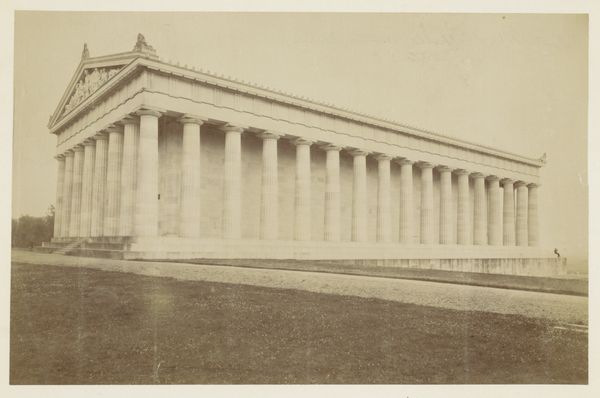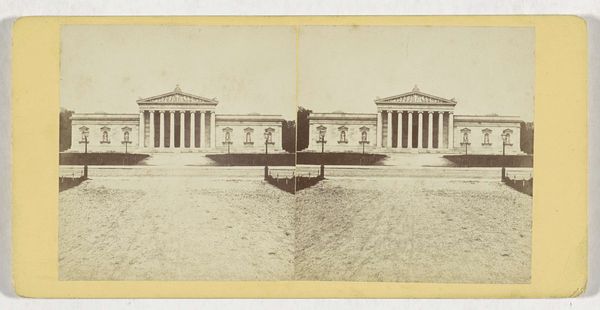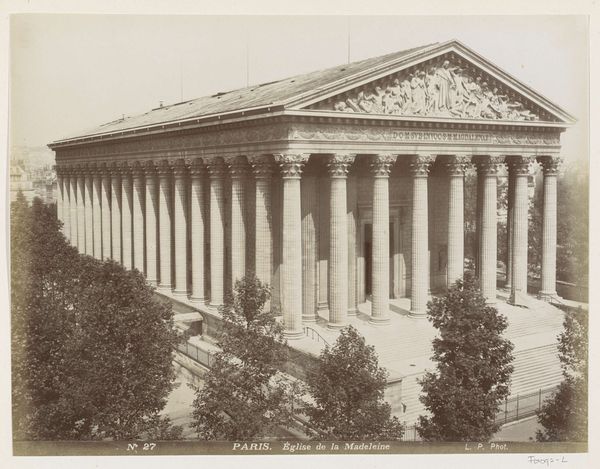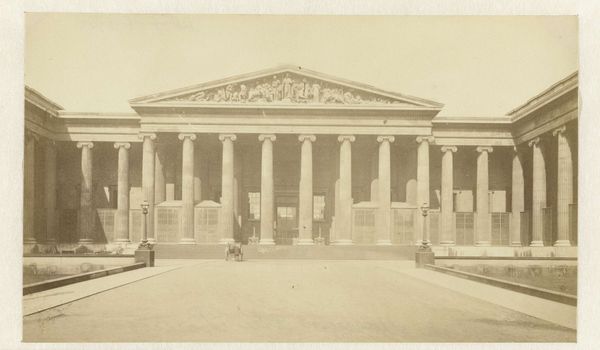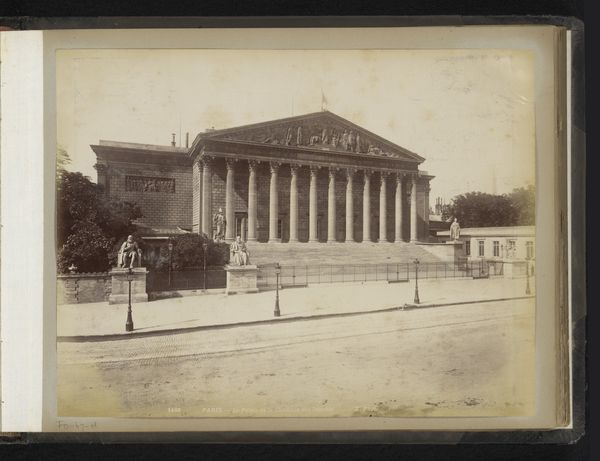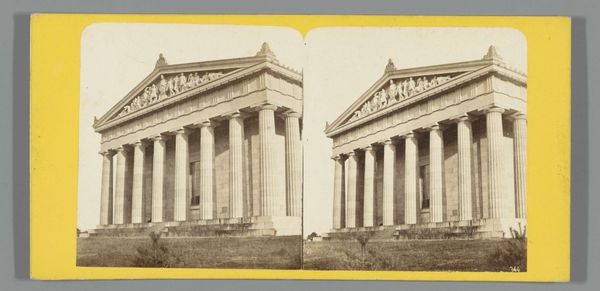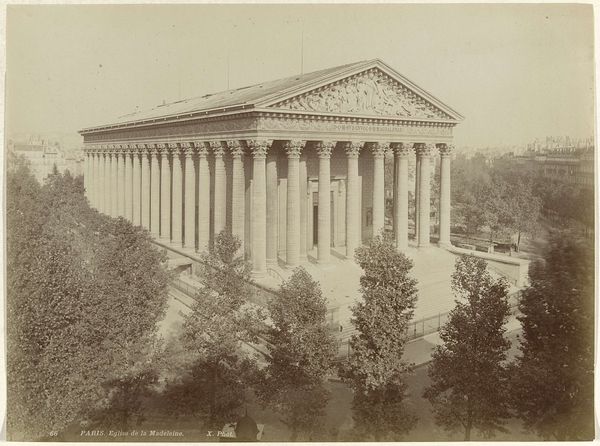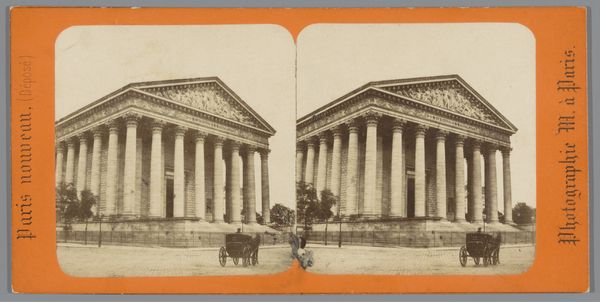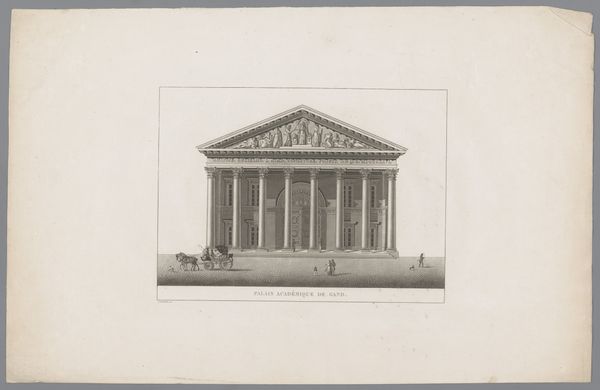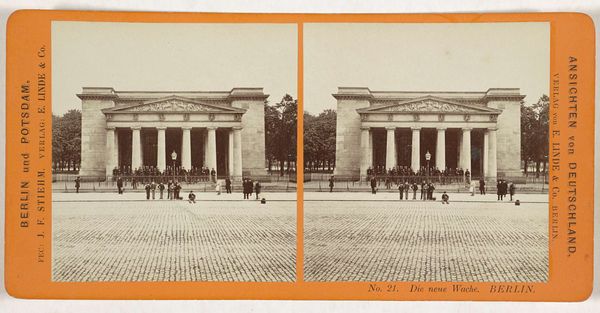
Dimensions: height 198 mm, width 258 mm, height 297 mm, width 359 mm
Copyright: Rijks Museum: Open Domain
Curator: Here we have a vintage print titled "Glyptothek in München," created between 1883 and 1900, part of the Rijksmuseum collection, attributed to Ferdinand Finsterlin. What’s your first reaction to this photograph? Editor: Whoa, that's imposing. It feels...severely symmetrical. Like a temple decreeing order on the landscape, and frankly on anyone approaching it. But also kinda calming, that rigid balance. Curator: That sense of imposing order is spot on. The Glyptothek is a museum in Munich designed in the neoclassical style, harking back to classical Greek architecture. Finsterlin captures that perfectly through the lens, highlighting its design principles. Editor: Neoclassical makes sense! The pillars, the pediment sculptures... it’s shouting ‘Ancient Greece, but make it *organized*’. Does the artist's choice to photograph it head-on like this speak to some architectural or societal ideal of the time? Curator: Absolutely. Neoclassicism, popular in the 19th century, represented a return to perceived ideals of rationality, order, and civic virtue, often in reaction to the perceived excesses of the Rococo. Photography like this wasn’t just documenting a building, but propagating those values through a new medium. Museums at the time wanted to project permanence, strength. Editor: So it's not just a photo of a building, it’s an endorsement. But from whose perspective? I mean, everything in the photo leads the eye *straight* there, toward the building's center. A purposeful invitation…or a directive? Curator: Well, museums play a complicated role as gatekeepers of culture. Early photography like this can further embed hierarchies in urban settings, as it shows idealized institutions rather than the whole cityscape. But consider too, it’s also about aspiration: about Germany seeing itself as a cultural heir to Greece at that time. Editor: Hmm. An idealized institution aspiring to an idealized past... staged and captured in sepia tones! All right. Makes one wonder what those marble dudes inside thought about it all, though, you know? I wonder what they saw, how they understood this photo, their legacy. Curator: A question indeed. It’s a lens through which to consider the complex relationship between art, power, and the propagation of cultural narratives in modern urbanity. Editor: I love how a building and a photo can give you so much to unpack. So much to chew on about what it all really MEANS. Thanks!
Comments
No comments
Be the first to comment and join the conversation on the ultimate creative platform.
